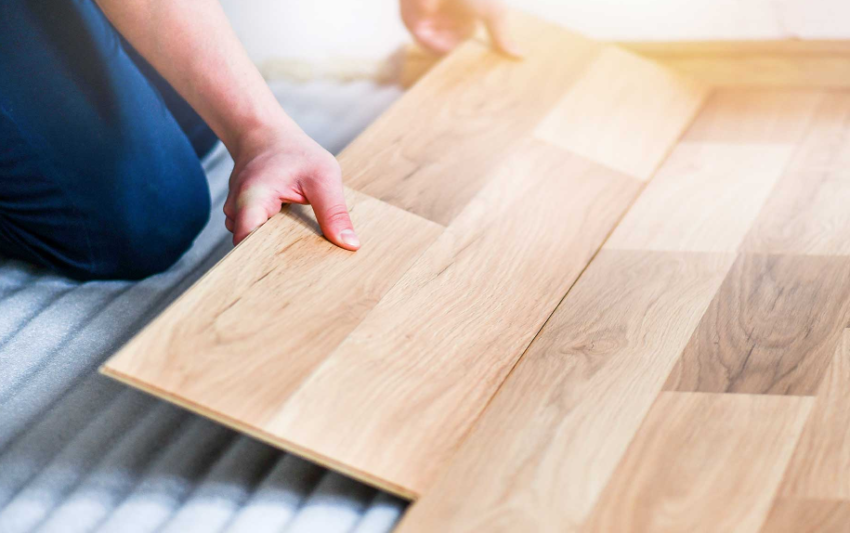If you’re a homeowner looking to upgrade your floors, laminate and vinyl are two popular options that offer affordability, durability, and versatility. However, with any home improvement project, proper installation is key to ensuring the longevity and quality of your new flooring.
This guide will cover everything you need to know about laminate flooring installation and vinyl flooring installation.
Understanding Laminate Flooring Installation
Laminate flooring is a synthetic product made up of layers fused through a lamination process. These layers consist of a backing layer, a core layer for stability and moisture resistance, a design layer with a printed image of wood or tile, and a wear layer for durability.
laminate flooring installation is relatively straightforward compared to other types of flooring. It’s also one of the most cost-effective options on the market. However, it’s essential to follow proper installation techniques to avoid any issues down the road.
Step-by-Step Laminate Flooring Installation
- Prepare the subfloor: The subfloor should be clean, dry, and level before installing your laminate flooring.
- Acclimate the flooring: Allow the laminate planks to adjust to the temperature and humidity of your home for at least 48 hours before installation.
- Lay down underlayment: Underlayment helps with sound reduction, moisture protection, and smoothing out imperfections in the subfloor.
- Start in a corner: Begin laying your first row of planks in a corner of the room, leaving an ¼ inch gap between the planks and walls for expansion.
- Continue with each row: Lay each additional row by clicking the planks together at an angle and then locking them in place.
- Cut planks to fit: Use a saw to cut planks as needed to fit around corners and edges.
- Finish with trim: Install baseboards or quarter round along the perimeter of the room for a clean, finished look.
Understanding Vinyl Flooring Installation
Vinyl flooring is another popular option due to its versatility, durability, and affordability. It’s made of several layers, including a backing layer, a core layer for stability and waterproofing, a design layer with a printed image of wood or tile, and a top protective layer.
Vinyl flooring installation varies depending on the type of vinyl you choose. However, it generally involves either peel-and-stick tiles or click-lock planks.
Step-by-Step Vinyl Flooring Installation
- Prepare the subfloor: Just like with laminate flooring, the subfloor should be clean, dry, and level before installation. However, with vinyl flooring, you may need to remove any existing flooring and add a layer of underlayment.
- Acclimate the flooring: Allow the vinyl planks or tiles to adjust to the temperature and humidity of your home for at least 48 hours before installation.
- Start in a corner: Begin laying your first row of planks or tiles in a corner of the room, leaving an ⅛ inch gap between the planks or tiles and walls for expansion.
- Continue with each row: Lay each additional row by clicking the planks or tiles together at an angle and then locking them in place.
- Cut planks or tiles to fit: Use a saw to cut planks or tiles as needed to fit around corners and edges.
- Finish with trim: Install baseboards or quarter round along the perimeter of the room for a clean, finished look.
Tips for Successful Laminate and Vinyl Flooring Installation
- Measure twice, cut once: It’s essential to take precise measurements to avoid any mistakes when cutting your planks or tiles.
- Follow manufacturer instructions: Different brands may have specific installation instructions, so be sure to read and follow them carefully.
- Use spacers: Spacers help maintain the proper expansion gap between the flooring and walls during installation.
- Check for imperfections: Before installing each plank or tile, check for any defects or damage that may affect its placement or appearance.
- Seek help from a professional: If you’re not confident in your skills or have a more complex project, don’t hesitate to seek help from a professional installer.
Conclusion
In conclusion, flooring installation can be a rewarding DIY project that adds beauty and value to your home. With the right tools, careful preparation, and a thorough understanding of the process, you can successfully vinyl flooring installation and enjoy the benefits for many years to come. Whether you choose vinyl or laminate flooring installation, the key lies in accurate measurements, correct use of tools and materials, and meticulous attention to detail. Remember that patience and preparation are your allies in this task. By following the steps and tips outlined in this guide, you’ll transform your space and become a truly knowledgeable homeowner.

